PudFest 2024: a feast of flavour
Are you tired of the same old parade of treats on your festive table? Bored stiff by yet another Bûche de Noel? Are you looking to introduce an element of thrill and peril into your party preparations which only a recipe lacking quantities, instructions or cooking temperature can provide? Well, festive feasters, you are in luck! As has become a December tradition here in St Andrews, the University Collections team has been diving into our historic cookbooks to test and taste a smattering of recipes from yesteryear.
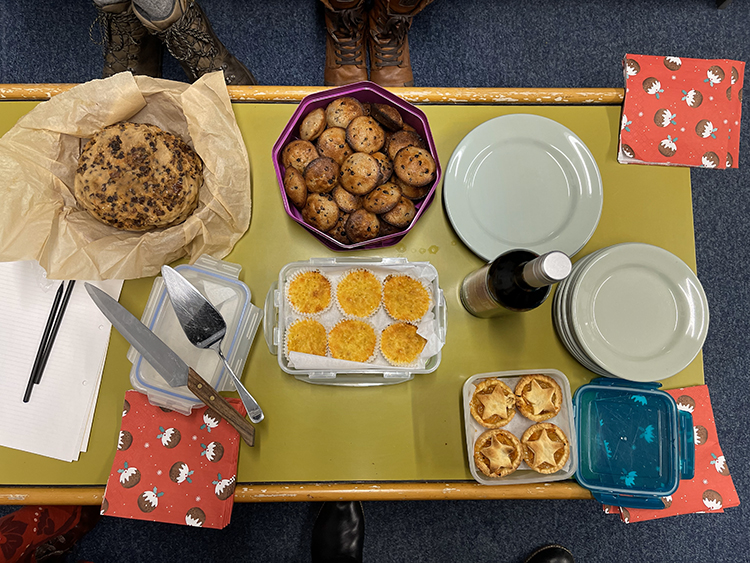
Dedicated followers may recall that we have previously sampled recipes for Yuletide classics such as mince pies, plum pudding and gingerbread. This year’s bakeoff took more of a freestyle approach, with the theme being “baker’s choice.” We had five entries: Dutch flummery, lemon cheesecakes, Portugal cakes, orange tart and polka pudding.

Overall winner of the taste-test was the c. 1830s “Orange Tart” recorded in Mrs King’s cookbook (msdep137/7, image 20) and baked by Miriam. The original recipe left a bit to the baker’s imagination, proposing “as many [oranges] as you may want to fill your dish, which was to be lined with a “sugar crust”. A sweet shortcrust pastry was used, along with four oranges, to fill 10 bite-sized tartlets. This was a simple yet effective recipe, squeezing every ounce of flavour out of oranges by simmering together the finely cut rind, segments and juice to create a jammy and zesty citrus filling which even the marmalade-haters in the room could palate.
Lemons Cheesecakes recipe in Edwards family of Henlow Warden recipe book, 1747-1859 (ms38783)
Voted best for buttery-ness were Mrs Smyth’s “Lemons Cheesecakes” made by Briony. These were taken from Edwards family of Henlow Warden recipe book, a multi-generational account whose recipes date to between about the 1747 – 1859 (ms38783, Family recipe book, Edwards family, p. 46, image 31). Unusually, for those accustomed to the modern cheesecake or who might be led astray by the name, this cheese-free recipe required only “the peel of too Large Lemons”, “a quarter pound or more of loaf sugar, the yolks of six eggs and half a pound of fresh butter.”
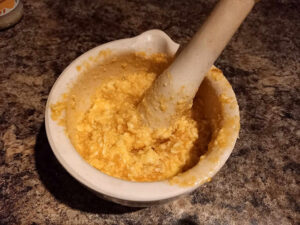
With no timings provided, the pared lemon peel was simmered for an hour. While the cheesecake mixture curdled when pounded together in the mortar as instructed, it was nonetheless baked – in paper cases in patty tins – for 20 minutes at 180 Celsius. The “cakes” bubbled like crazy when cooking but to everyone’s surprise came out in one piece. Though these were probably the most unusual puddings tested, tasters enjoyed the strong lemony flavour and offered up a hesitant “sort-of” to the question of whether you can make a cheesecake without cheese. Briony herself suggested that “perhaps the most successful part of the bake was the amaretto sours I had afterwards – after all, I had lemon juice and egg whites left over!”
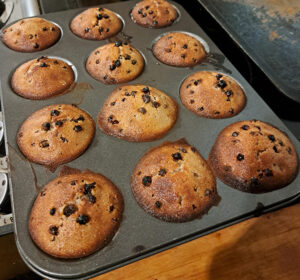
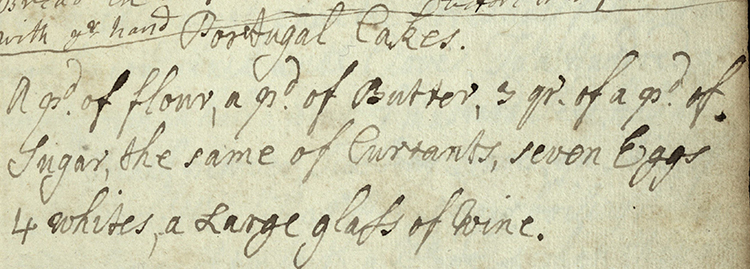
Eddie’s Portugal cakes were hailed as perfect for parties (though came a close second in the best for butter category). Also taken from the Edwards family recipe book (image 10, p. 7), these came with no instructions at all for cooking, only giving a sparse list of ingredients: a pound of flour, a pound of butter, 3 quarters of a pound of sugar, the same of currants, seven eggs four whites and a large glass of wine. The main mystery to be solved was whether the recipe was truly calling for 11 eggs to only a pound of flour. Eddie’s best guess of three whole eggs and four whites proved correct, producing delightful small, intensely buttery sponges with a rich fruity flavour.
Polka pudding recipe from the recipe book of Mrs Jane Whittet Greig of Myres Castle, Auchtermuchty (ms37011).
Miriam’s Polka Pudding (ms37011, p. 93), a boiled beast of a pudding not too distant from a clootie dumpling, won the “most suitable replacement for a curling stone” category with panache.
This intriguing recipe included mashed potato and carrot – in addition to the more usual suet, flour, sugar, spices, currants, raisins and candied peel – and an instruction to boil the pudding for six hours. The final, ominous throw-away comment that “it is perhaps safer to include two eggs” made the recipe utterly irresistible! Recorded by Mrs Jane Whittet Greig of Myres Castle, Auchtermuchty, around 1840, the final pudding was quite hefty though not unpleasant, with only a gentle hint of mashed potato.
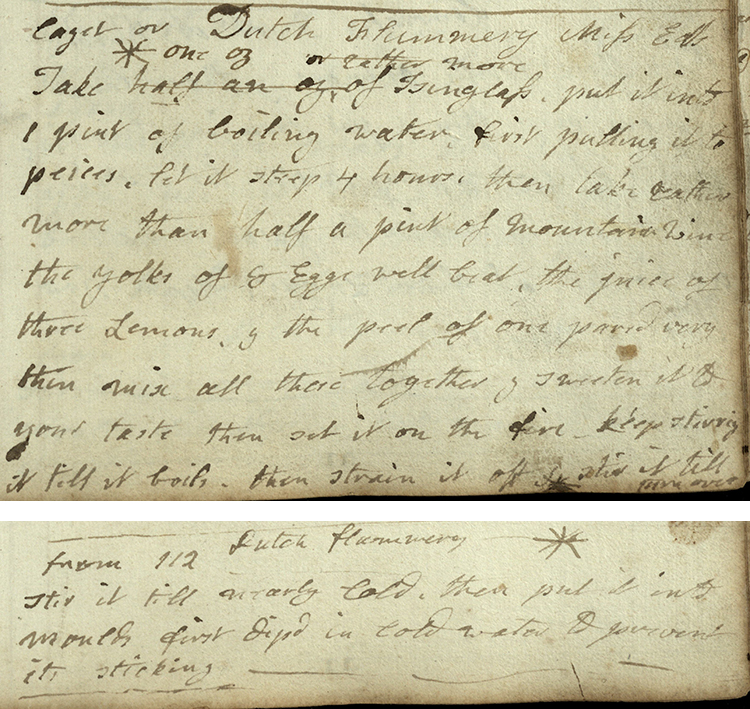
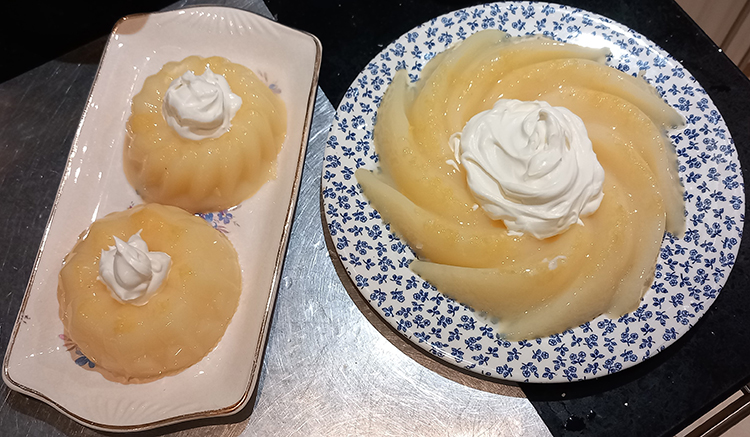
By far the most elegant dessert was Maia’s version of Miss Edward’s “Caget or Dutch Flummery” (ms38783, p. 112 and 114, image 64). This set pudding of lemon, egg yolks and wine chilled in a fluted mould would be a stylish finale to any smart dinner. The result had a beautiful pale gold colour, a moreish silky-smooth texture, and a complex, barely-sweetened sour flavour – though this proved a little too tart for some tasters. While Maia followed the recipe as given, she did allow herself a slight deviation: using ordinary white wine in place of the “mountain wine” called for and swapping isinglass – a setting agent made from fish bladders – for gelatine.
So, if you’ve been inspired and fancy surprising your guests with a new Christmas classic, why not delve into these historic recipes for a real taste of history?
The original recipes are available to read online:
Mrs Greig, Myres Castle: recipe book, post 1800 (ms37011) Recipe book | Collections | University of St Andrews
Recipes and remedies for ailments (msdep137/7) Recipe book | Collections | University of St Andrews
Recipe and medical book (ms38783) Recipe and medical book | Collections | University of St Andrews
And if you would like to give some festive classics a go, here are reports on our previous bakes:
Gingerbread: Historical How-To’s, Special Holiday Edition: The Great Gingerbread Bake-Off – Special Collections blog
Mince Pies: 52 Weeks of Historical How-To’s, Week 8: The Great Mince Pie Bake Off – Special Collections blog
Plum Pudding: The Great Plum Pudding ‘Bake’-Off – Special Collections blog
Miriam Buncombe
Archives Assistant